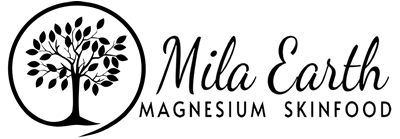
This morning, my nine-year-old daughter sipped on her morning cup of raw, farm-fresh milk—the kind with the thick, golden cream floating on top. She giggled as the cream clung to her upper lip, proudly showing off her “milk moustache.” It sparked a memory: those iconic Got Milk? ads from the ’80s and ’90s. You know the ones—celebrities flashing perfectly creamy milk moustaches, grinning as though they’d just sipped the healthiest thing on earth.
But here’s the kicker: most of those ads were pure marketing. They sold us on the look of rich, creamy milk while quietly stocking grocery store shelves with something entirely different—homogenized, pasteurized, low-fat, nutrient-stripped liquid that barely resembles real milk.
You Can’t Even Get a Milk Moustache with Store-Bought Milk
That’s the funny part. The milk moustache those ads made famous? You can’t even make one with processed milk. Why? Because the cream—the rich layer full of healthy fats, vitamins, and brain-boosting nutrients—has been stripped out, homogenized, and turned into shelf-stable white water. What’s left lacks the essential omega-3s, enzymes, and fat-soluble vitamins (A, D, E, and K2) that raw milk naturally provides.
The Raw Milk Difference: Nutrition That Actually Nourishes
Raw milk from healthy, grass-fed cows is a complete food. It contains:
✔️ Healthy saturated fats for brain development
✔️ Omega-3 fatty acids critical for heart health and reducing inflammation
✔️ Naturally occurring probiotics and enzymes to support digestion
✔️ Fat-soluble vitamins for immune function, hormone balance, and growth
✔️ Full-spectrum amino acids to help young muscles grow and repair
Store-bought “milk”—especially low-fat or skim versions—has been processed to the point where most of these nutrients are either destroyed or removed entirely. And plant-based alternatives? Let’s be real. Unless you’re making it yourself and soaking your nuts to reduce oxalates, most commercial plant milks are full of:
🚫 Industrial seed oils
🚫 Sugar and artificial sweeteners
🚫 Thickeners and stabilizers (like carrageenan)
🚫 High oxalate content that can aggravate inflammation
We’re sold the idea of health, but not the substance. Marketing has conditioned us to believe “low-fat” means better, but in reality, stripping fat from milk strips away nature’s built-in package of essential nutrients. Worse, the plant-based versions are often more processed, more inflammatory, and—ironically—further from nature.
The Legal Path to Real Milk
Now, before someone jumps in with the legalities—yes, I know raw milk isn’t available on every corner. But there are legal, ethical ways to access it. Cow-share programs exist, where you invest in the livelihood of the animal and, in return, receive its products. You’re not buying milk off the shelf—you’re part-owner of the cow, contributing to its care, and receiving your fair share.
Time to Rethink What “Healthy” Means
The takeaway? Question what you’ve been shown. If an ad sells you the image of creamy, nourishing milk but the product is stripped, watered down, and sugar-laden, it’s time to dig deeper. True health isn’t found in low-fat labels or flashy plant milk cartons. It’s found at the source—in real, whole foods our ancestors thrived on.
And yes… in a real milk moustache.

